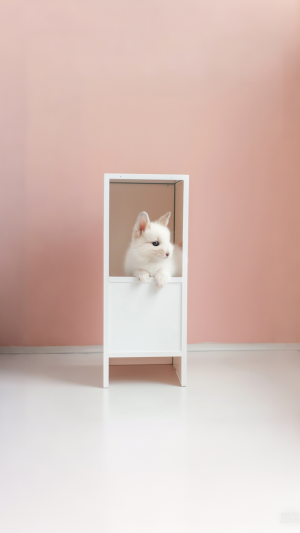Cute things hold a universal appeal, with Japan being renowned for its plethora of adorable merchandise featuring popular characters like Hello Kitty and Pokémon.
The concept of kawaii, which roughly translates to cute in Japanese, has transcended borders to become a widely recognized term. Despite the clear joy that cute items bring, the specifics of their impact on our minds remain uncertain.
<h3>The Study</h3>
A study published in PLoS ONE examined the effects of viewing cute images, particularly those of baby animals, on people's attention and subsequent task performance. The research involved 132 university students who were tasked with ranking pictures of baby animals within a set time period. The participants then engaged in tasks requiring fine dexterity and visual search abilities.
<b>Enhanced Performance</b>
The study revealed that individuals exhibited improved focus and performance after viewing cute baby animal images compared to grown animal images. In tasks involving precision and attention to detail, such as the Operation game, participants displayed a higher success rate and spent more time on the task following exposure to cute images.
<b>Narrowed Attention</b>
Furthermore, viewing cute images led to a narrowing of attentional focus in participants. This effect was evident in tasks assessing global and local letter recognition, where individuals processed visual stimuli with greater precision after viewing pictures of baby animals.
<b>Emotional Response to Cute</b>
The positive emotion associated with cuteness (kawaii) was deemed responsible for the observed behavioral changes. The inherent motivation to approach and engage with cute stimuli prompts individuals to adopt a more meticulous approach to tasks. This emotional response influences attentional focus and task performance over a period.
<b>Implications</b>
While cute stimuli are associated with increased happiness, this study underscores their influence on cognitive processes and behavior. The study highlights the psychological underpinnings of the global fascination with cute items, particularly those originating from Japanese pop culture.
<b>Future Research</b>
Despite these findings, there remains a gap in understanding whether the effects of cuteness are specific to infant animals or extend to other forms of endearing stimuli. Further exploration is warranted to ascertain the broader implications of cuteness on human behavior.
In essence, the allure of cute things extends beyond mere aesthetics, shaping our cognitive processes and behavioral tendencies. As an integral component of Japanese pop culture, the phenomenon of kawaii warrants deeper scientific exploration to unravel its psychological significance in the context of global fascination.
The psychology behind why we find certain things cute
Video By Know The Unknown





